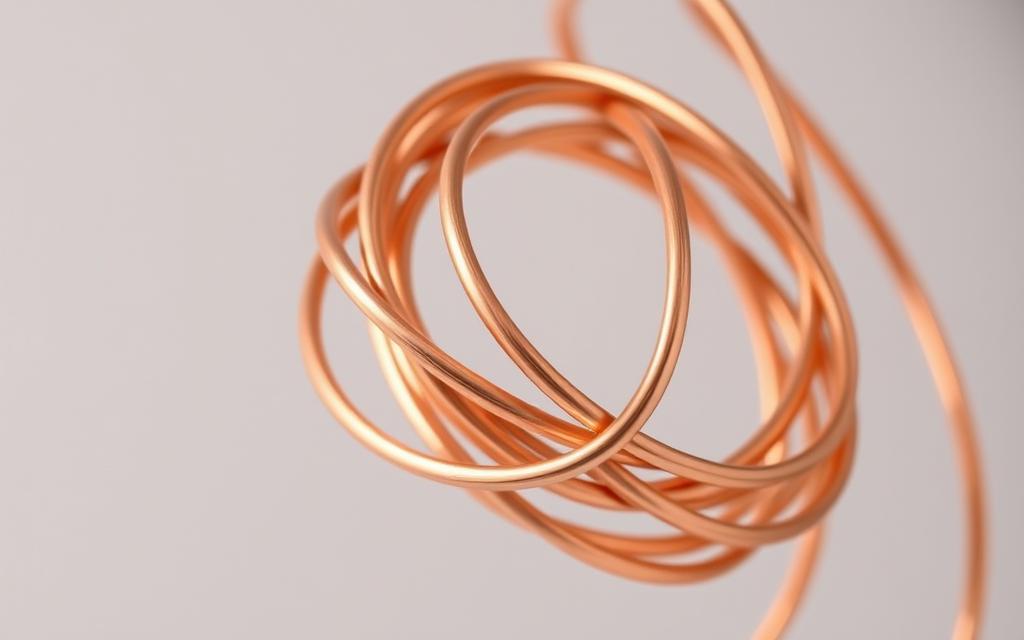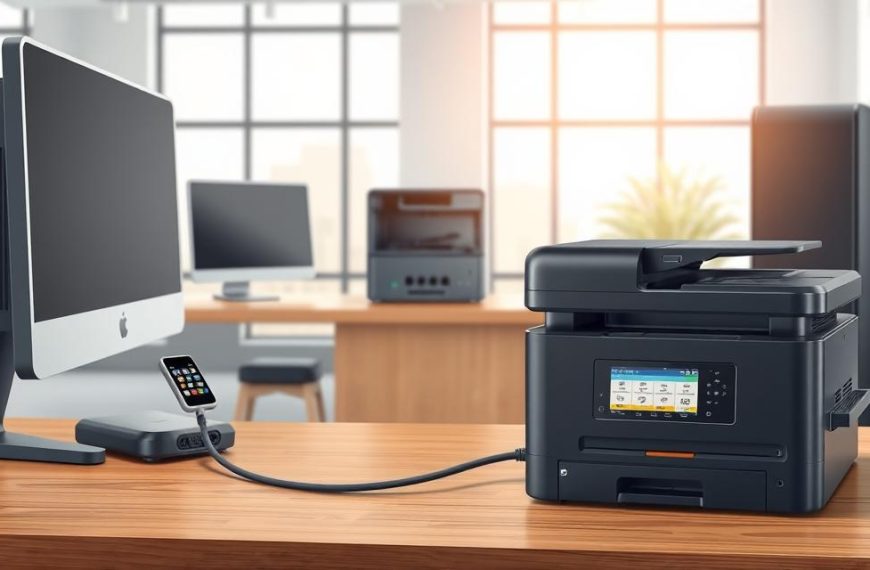Modern connectivity relies on copper wires twisted together to ensure smooth data transmission. These cables form the foundation of most wired network setups, from home offices to large enterprises.
By twisting insulated conductors, interference from external sources gets minimized. This design allows for reliable signal quality over longer distances. Compared to bulkier alternatives, these solutions offer flexibility and cost-efficiency.
Today’s applications go beyond traditional phone lines. Ethernet connections, security systems, and smart devices all benefit from this technology. Different categories support varying speeds, making them adaptable for evolving needs.
Key advantages include reduced crosstalk and scalable performance. Whether for basic internet access or complex data centers, these pairs deliver consistent results across diverse environments.
What Is Twisted Pair Cable in Computer Network?
At the heart of wired communication lies a simple yet powerful design: two insulated copper wires spiraled together. This configuration creates a balanced transmission line, essential for clear data transmission across various setups.
Definition and Basic Structure
These pairs typically use 22-26 AWG conductors, with 24 AWG being the most common. The counterclockwise twists, spaced 38.1-140mm apart, form the backbone of their effectiveness. Alexander Graham Bell first patented this concept in 1881 to improve telegraph signals.
Key structural elements include:
- Insulation materials like polyethylene for durability
- Varying twist rates per pair to minimize crosstalk
- Balanced current flow for electromagnetic compatibility
How Twisting Reduces Interference
The spiral design creates opposing magnetic fields when current flows. This natural cancellation effect handles external interference efficiently. For example, Cat5 cables follow the attenuation formula: 1.9267√(f) + 0.75(f).
Two primary methods combat noise:
- Self-shielding in UTP through precise twist ratios
- Additional shielding layers in STP for high-EMI environments
UTP achieves 65dB NEXT at 100MHz, while STP adds foil or braid for enhanced protection. This makes them ideal for different network configurations.
Types of Twisted Pair Cables
Networking solutions rely on two primary variants of copper-based wiring. Each design caters to specific environments, balancing performance, cost, and durability. Understanding these options ensures optimal choices for homes, offices, or industrial setups.
Unshielded Twisted Pair (UTP): Features and Common Uses
UTP dominates 80% of LAN installations due to its simplicity and affordability. Four color-coded pairs (orange, green, blue, brown) simplify termination, while PVC jackets protect against physical wear.
Key advantages include:
- Lightweight design with a 6.4mm diameter
- Flexible bend radius (4x diameter) for tight spaces
- Fire ratings like CMP for plenum spaces
Common in Ethernet and telephone lines, it costs just $0.15 per foot for Cat6. However, its lack of shielding makes it vulnerable to interference in noisy environments.
Shielded Twisted Pair (STP): Enhanced Protection and Applications
STP adds foil wraps around each pair and a braided outer layer. This double-shield construction blocks electromagnetic noise, supporting frequencies above 600MHz.
Critical applications include:
- Medical equipment requiring zero signal disruption
- Factory floors with heavy machinery
- Data centers needing minimal crosstalk
“STP’s 9.5mm diameter and 8x bend radius demand careful installation but deliver unmatched reliability.”
Key Differences Between UTP and STP
Choosing between these options hinges on three factors:
- Cost: STP costs 30-40% more due to added foil and labor
- Installation: STP requires grounded terminations; UTP plugs in directly
- Performance: STP excels in high-interference zones
For most offices, UTP suffices, while hospitals and factories benefit from STP’s robust shielding.
Categories and Performance Standards
Advancements in copper-based wiring have led to distinct classifications, each optimized for specific performance levels. These categories determine speed, frequency, and compatibility across various setups.
From Cat1 to Cat8: Evolution of Capabilities
The journey began with Cat1 in the 1980s, handling basic voice calls at 750 kHz. By 1995, Cat5 emerged, supporting 100 Mbps data transmission for early Ethernet networks.
Key milestones include:
- Cat3 (1991): 16 MHz bandwidth for 10BASE-T
- Cat6 (2002): 250 MHz, enabling 10Gbps over 55m
- Cat8 (2016): 2000 MHz for 40Gbps in data centers
“Cat6A’s 500 MHz bandwidth revolutionized enterprise networks, doubling Cat6’s capabilities while maintaining backward compatibility.”
| Category | Bandwidth | Max Speed | Typical Use |
|---|---|---|---|
| Cat5e | 100 MHz | 1 Gbps | Home/office networks |
| Cat6 | 250 MHz | 10 Gbps | High-speed LANs |
| Cat8 | 2000 MHz | 40 Gbps | Data center backbones |
Choosing the Right Category for Your Needs
Consider these factors when selecting categories:
- Budget: Cat5e costs $0.20/ft vs Cat8 at $1.50/ft
- Distance: Cat6A supports 100m at 10Gbps; Cat8 drops to 30m
- Future-proofing: Cat6A balances cost and performance
For most offices, Cat6 delivers optimal value. Data centers handling 40Gbps data transmission require Cat8’s shielded twisted pairs and GG45 connectors.
Technical Specifications and Testing
Network stability begins with understanding key electrical properties. Every installation requires validation against industry benchmarks to guarantee optimal performance. Three core parameters determine signal integrity across copper-based connections.
Critical Parameters: Attenuation, Crosstalk, and Impedance
Attenuation measures signal loss over distance, expressed in decibels. Cat6A shows 21.3dB loss at 100MHz, outperforming Cat5e’s 24dB. Lower values mean better data retention across long runs.
Crosstalk occurs when signals leak between adjacent wires. Cat6A achieves PSANEXT >55dB, a 56% improvement over Cat5e. Twist rates (38.1-140mm) directly impact this metric.
Key measurements include:
- DC resistance ≤19.2Ω per 100m
- Pair balance ≤0.1Ω for consistent current flow
- Capacitance under 5.6nF/100m
How Twisted Pair Cables Are Tested for Quality
Certification tools like the Fluke DSX-8000 perform Tier 1 validation. They check for:
- Impedance mismatches using time-domain reflectometry
- NEXT (Near-End Crosstalk) at multiple frequencies
- Return loss for signal reflection analysis
“Permanent link testing evaluates installed cabling separately from patch cords, while channel testing includes all components.”
Moisture content affects capacitance, so installers monitor environmental conditions. Compliance follows TIA-1152-A Level III/IV standards for enterprise-grade installations.
Applications in Modern Networking
From home offices to industrial complexes, copper-based wiring solutions power critical connections. Their versatility spans multiple industries, adapting to evolving data transmission demands while maintaining reliability.
Twisted Pair in Ethernet and LANs
Modern Ethernet standards leverage all four conductor pairs for maximum throughput. 1000BASE-T delivers 1Gbps speeds, while 40GBASE-T pushes boundaries with Cat8 cables in data centers.
Key implementations include:
- PoE++ (802.3bt) powering devices with 90W over Cat5e+
- HDBaseT transmitting 4K video through Cat6 wiring
- PROFINET industrial protocols running on Cat7 STP
“Enterprise networks increasingly adopt Cat6A for its 500MHz bandwidth, supporting 10Gbps across entire buildings.”
Telephone Lines, DSL, and Beyond
Legacy telephone lines still utilize Cat3 wiring, while VDSL2 achieves 100Mbps over 300m distances. DSLAM cabinets rely on these connections for last-mile connectivity in rural areas.
Emerging applications show surprising adaptability:
- USB-over-Twisted-Pair extenders reaching 100m
- IP security camera systems using UTP instead of coaxial
- Building automation systems controlling HVAC via Cat5e
For structured cabling solutions, explore this comprehensive guide to copper wiring.
Conclusion
Despite fiber advancements, copper wiring remains a cornerstone of reliable connections. Its cost-efficiency and proven transmission quality ensure widespread use in data centers and offices.
Cat6A emerges as the new baseline for enterprises, balancing 10Gbps speeds with backward compatibility. Its shielded variants handle interference better, ideal for high-density setups.
Sustainability adds value—95% of copper in cables is recyclable. This reduces e-waste, aligning with eco-friendly initiatives.
Challenges like 25/40GbE power demands test twisted pair limits. A hybrid approach, combining Cat6A and fiber, prepares networks for the future.












